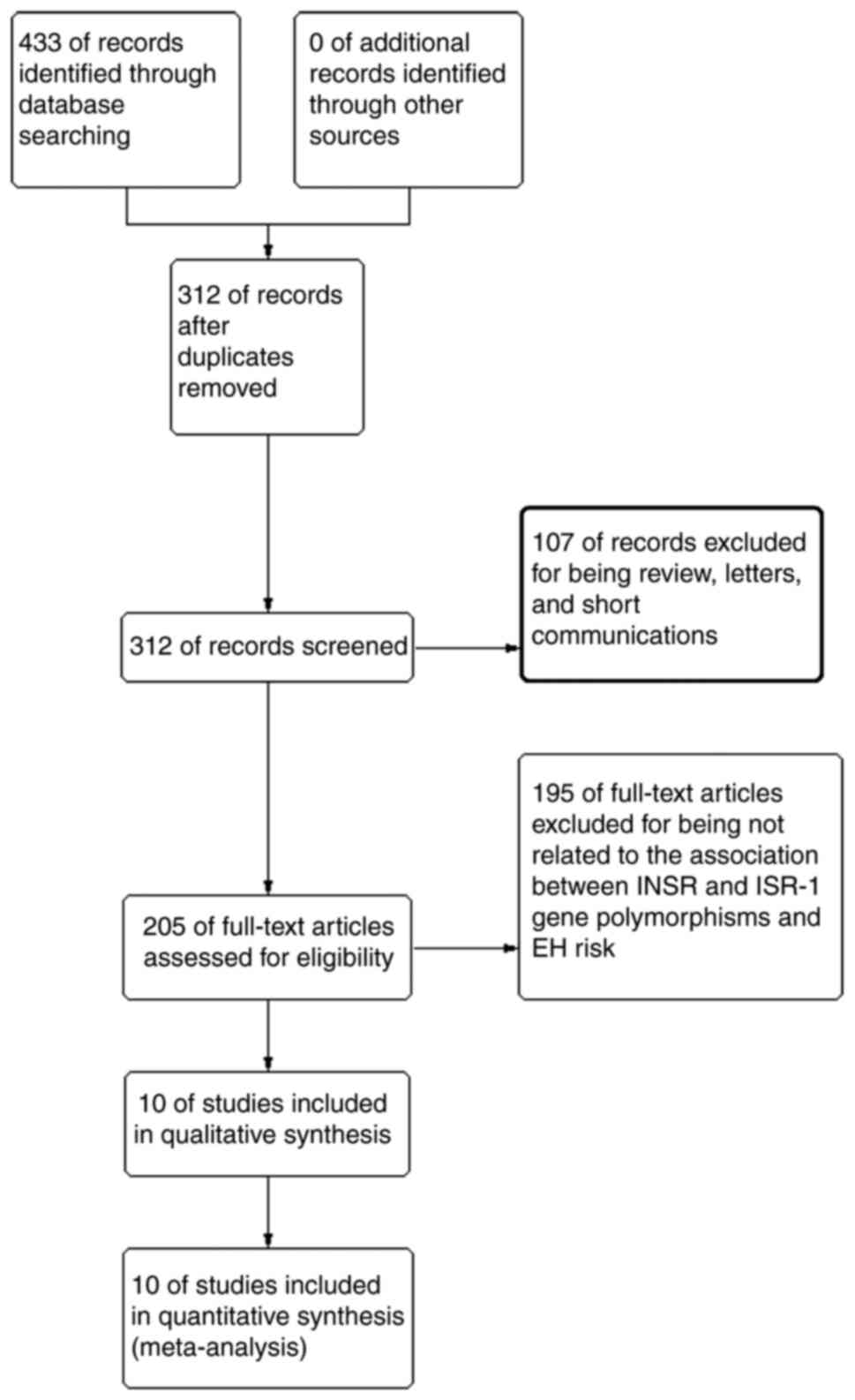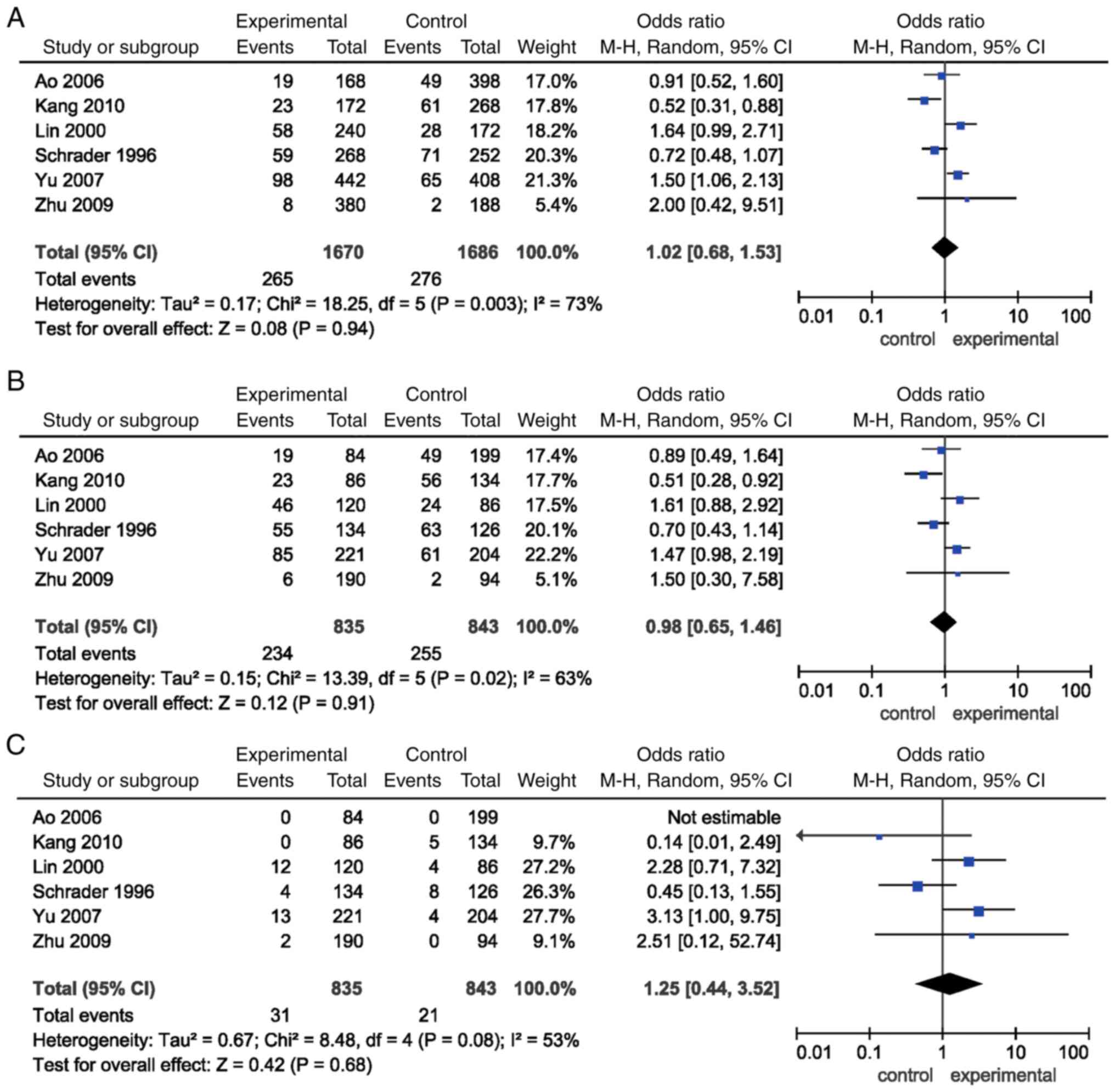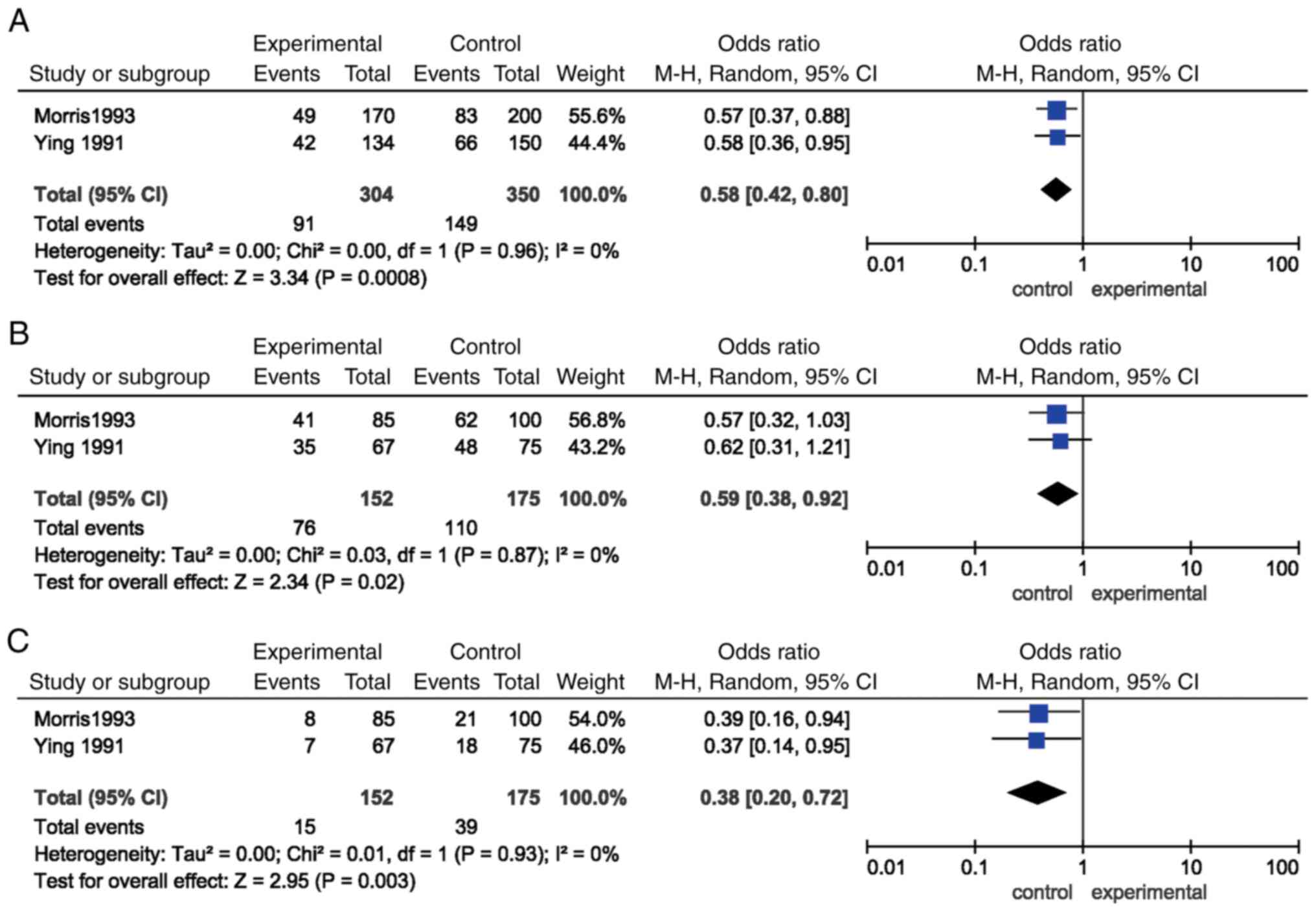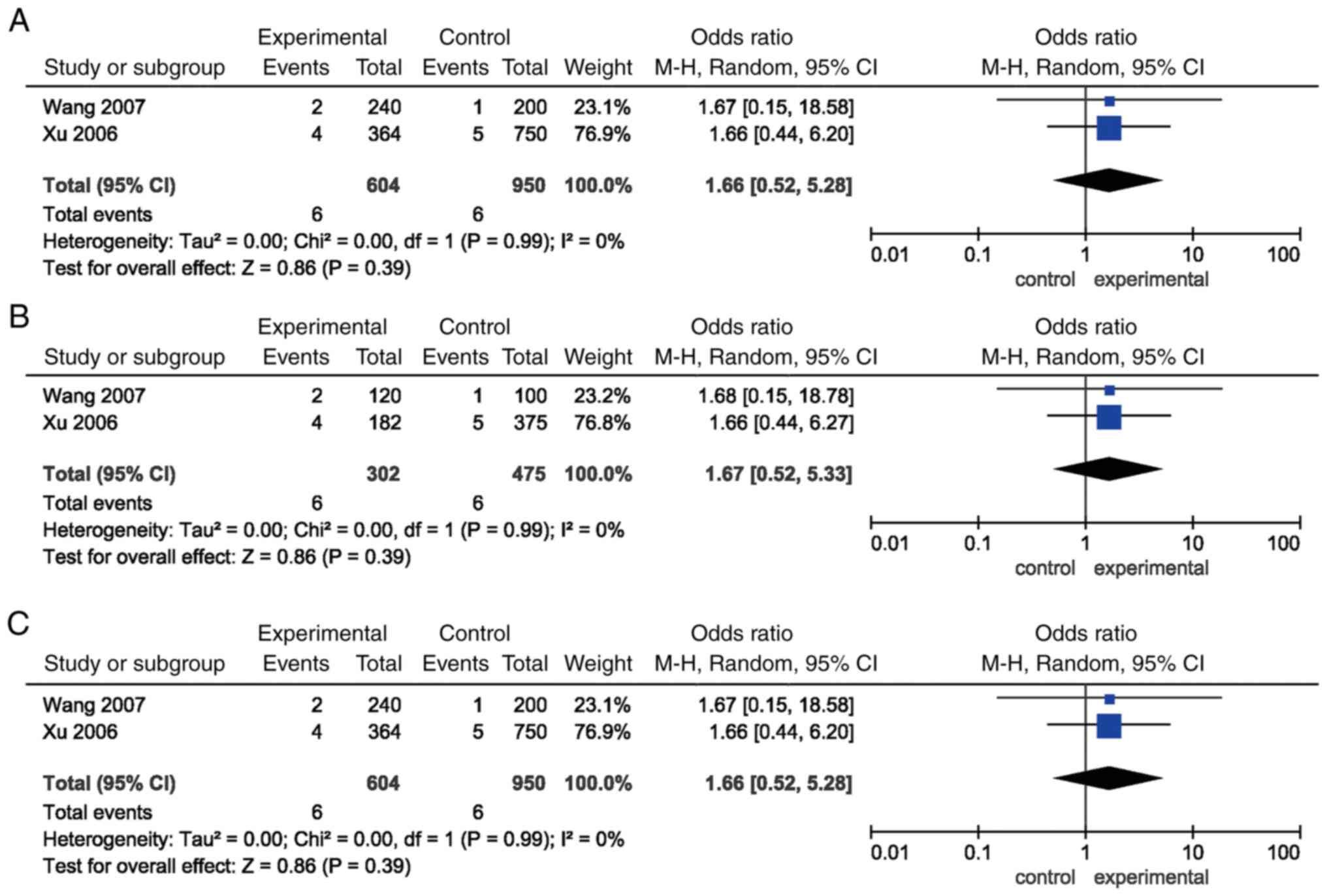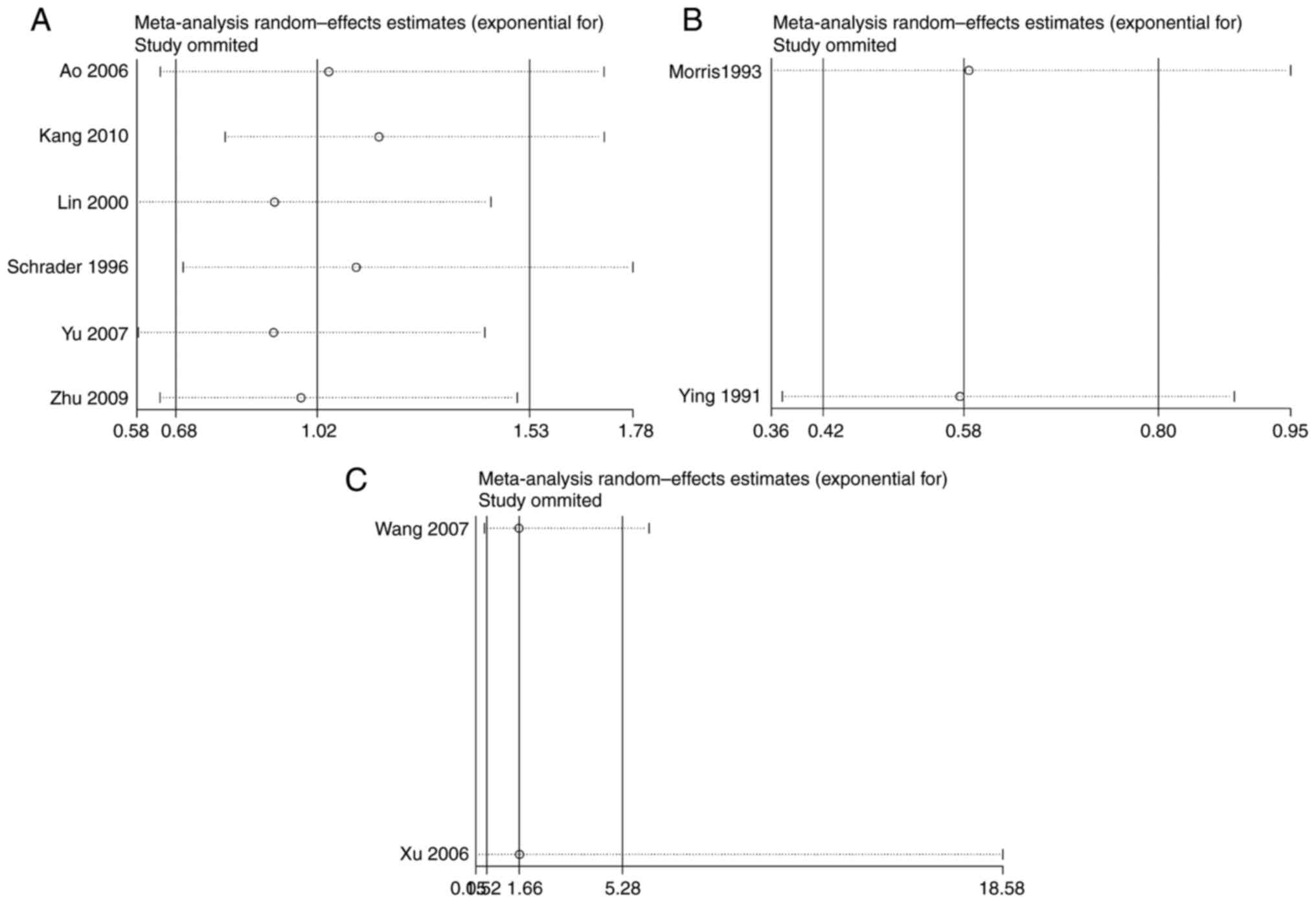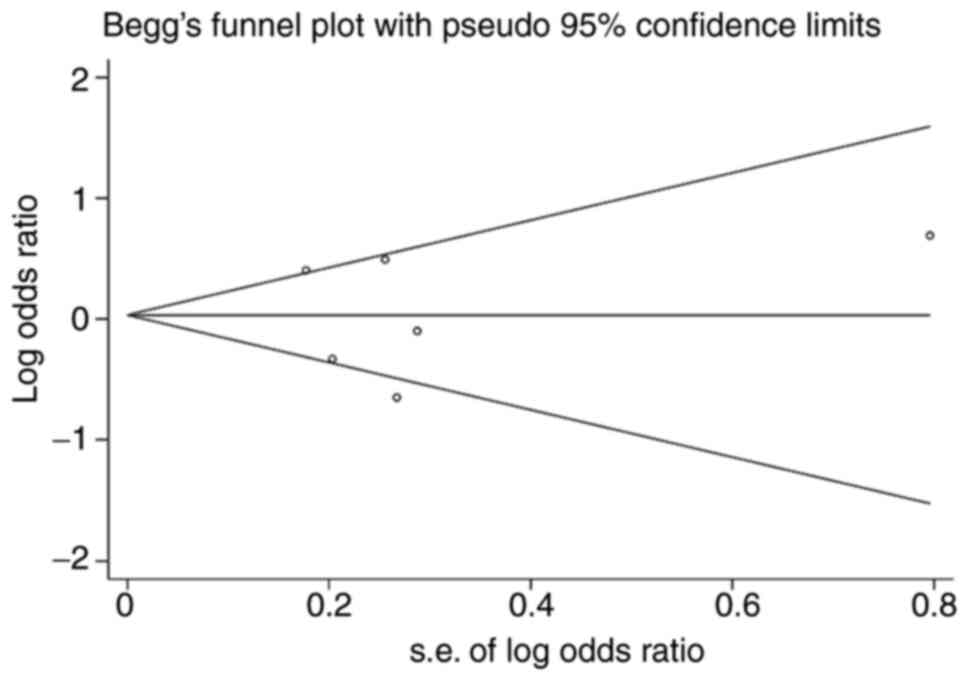|
1
|
Lifton RP, Gharavi AG and Geller DS:
Molecular mechanisms of human hypertension. Cell. 104:545–556.
2001.PubMed/NCBI View Article : Google Scholar
|
|
2
|
Gu D, Reynolds K, Wu X, Chen J, Duan X,
Muntner P, Huang G, Reynolds RF, Su S, Whelton PK, et al:
Prevalence, awareness, treatment, and control of hypertension in
China. Hypertension. 40:920–927. 2002.PubMed/NCBI View Article : Google Scholar
|
|
3
|
Gu S, Wang A, Ning G, Zhang L and Mu Y:
Insulin resistance is associated with urinary albumin-creatinine
ratio in normal weight individuals with hypertension and diabetes:
The REACTION study. J Diabetes. 12:406–416. 2020.PubMed/NCBI View Article : Google Scholar
|
|
4
|
Bamaiyi AJ, Woodiwiss AJ, Peterson V,
Gomes M, Libhaber CD, Sareli P and Norton GR: Insulin resistance
influences the impact of hypertension on left ventricular diastolic
dysfunction in a community sample. Clin Cardiol. 42:305–311.
2019.PubMed/NCBI View Article : Google Scholar
|
|
5
|
Morris BJ: Insulin receptor gene in
hypertension. Clin Exp Hypertens. 19:551–565. 1997.PubMed/NCBI View Article : Google Scholar
|
|
6
|
Hanis CL and Bertin TK: Identification of
an insulin receptor exon 8 NsiI polymorphism using the polymerase
chain reaction. Nucleic Acids Res. 18(5923)1990.PubMed/NCBI View Article : Google Scholar
|
|
7
|
Schrader AP, Zee RY and Morris BJ:
Association analyses of NsiI RFLP of human insulin receptor gene in
hypertensives. Clin Genet. 49:74–78. 1996.PubMed/NCBI View Article : Google Scholar
|
|
8
|
Kang BY, Kim KT, Eo HS, Lee KH, Hong SS,
Shin JH and Lee CC: Association between genetic variation of the
insulin receptor gene and essential hypertension in the Korean
population. Korean J Biol Sci. 4:87–90. 2000.
|
|
9
|
Lin CR, Wu KG, Xie LD, Ye Q and Chen S:
The association between Insulin receptor gene exon 8 Nsi I
polymorphism and hypertension in Chinese population. Chin J Med
Genet. 17:364–365. 2000.(In Chinese).
|
|
10
|
Ao Y, Xu C and Geer L: Association of the
INSR gene with essential hypertension in Xinjiang Mongol group. J
Xinjiang Med Univ. 29:804–807. 2006.(In Chinese).
|
|
11
|
Annalisa G, Pappalardo MA, Russo GT, Romeo
EL, Alibrandi A, Di Bari F, Vita R, Cucinotta D and Benvenga S:
Influence of peroxisome proliferator-activated receptor-γ exon 2
and exon 6 and insulin receptor substrate (IRS)-1 Gly972Arg
polymorphisms on insulin resistance and beta-cell function in
southern mediterranean women with polycystic ovary syndrome. J Clin
Transl Endocrinol. 13:1–8. 2018.PubMed/NCBI View Article : Google Scholar
|
|
12
|
Albegali AA, Shahzad M, Mahmood S and
Ullah MI: Genetic association of insulin receptor substrate-1
(IRS-1, rs1801278) gene with insulin resistant of type 2 diabetes
mellitus in a Pakistani population. Mol Biol Rep. 46:6065–6070.
2019.PubMed/NCBI View Article : Google Scholar
|
|
13
|
Dziwura J, Bińczak-Kuleta A, Miazgowski T,
Ziemak J and Widecka K: The associations between G972R polymorphism
of the IRS-1 gene, insulin resistance, salt sensitivity and
non-dipper hypertension. Hypertens Res. 34:1082–1086.
2011.PubMed/NCBI View Article : Google Scholar
|
|
14
|
Wang FJ, Xie XQ, Li XD and Li X-Q: The
correlation analysis of IRS-1 polymorphism with CRP in essential
hypertension. J Yunyang Med Coll. 26:141–143. 2007.(In
Chinese).
|
|
15
|
Xu L, Ao YT, Wu M, Song T and Ge E:
Association of the G972R polymorphism of IRS-1 with essential
hypertension in Xinjiang Mongol group. J Xinjiang Med Univ.
29:926–928. 2006.(In Chinese).
|
|
16
|
Zee RY, Lou YK and Morris BJ: Insertion
variant in intron 9, but not microsatellite in intron 2, of the
insulin receptor gene is associated with essential hypertension. J
Hypertens Suppl. 12:S13–S22. 1994.PubMed/NCBI
|
|
17
|
Qiu CC, Zhu XL, Ji TR, Gao Z, Sun M, Guan
B, Guo D and Liu L: Analysis of insulin receptor gene in essential
hypertension. Acta Acad Med Sin. 17:81–85. 1995.(In Chinese).
|
|
18
|
Zhu M, Chen XM, Men S, et al: Relationship
between insulin receptor G6244A gene polymorphism and essential
hypertension in Dongtai rural area, Jiangsu Province. Chin Gen
Pract. 12:2130–2132. 2009.(In Chinese).
|
|
19
|
Morris BJ, Zee RY, Ying LH and Griffiths
LR: Independent, marked associations of alleles of the insulin
receptor and dipeptidyl carboxypeptidase-I genes with essential
hypertension. Clin Sci (Lond). 85:189–195. 1993.PubMed/NCBI View Article : Google Scholar
|
|
20
|
Ying LH, Zee RYL, Griffiths LR and Morris
BJ: Association of a RFLP for the insulin receptor gene, but not
insulin, with essential hypertension. Biochem Biophys Res Commun.
181:486–492. 1991.PubMed/NCBI View Article : Google Scholar
|
|
21
|
Yu GF, Ma JX, Fu ZT, Liu C, Guo X, Li W,
Su J, Liu H, Chen X, et al: Correlation research in NSII
polymorphism of insulin receptor gene and essential hypertension.
Mod Prev Med. 34:457–459. 2007.(In Chinese).
|
|
22
|
Saiya-Cork K, Collins R, Parkin B,
Ouillette P, Kuizon E, Kujawski L, Erba H, Campagnaro E, Shedden K,
Kaminski M and Malek SN: A pathobiological role of the insulin
receptor in chronic lymphocytic leukemia. Clin Cancer Res.
17:2679–2692. 2011.PubMed/NCBI View Article : Google Scholar
|
|
23
|
Tuthill A, Semple RK, Day R, Soos MA,
Sweeney E, Seymour PJ, Didi M and O'rahilly S: Functional
characterization of a novel insulin receptor mutation contributing
to Rabson-Mendenhall syndrome. Clin Endocrinol (Oxf). 66:21–26.
2007.PubMed/NCBI View Article : Google Scholar
|
|
24
|
Yip CC: Insulin receptor: Aspects of its
structure and function. Adv Exp Med Biol. 334:79–88.
1993.PubMed/NCBI View Article : Google Scholar
|
|
25
|
Curtain R, Tajouri L, Lea R, MacMillan J
and Griffiths L: No mutations detected in the INSR gene in a
chromosome 19p13 linked migraine pedigree. Eur J Med Genet.
49:57–62. 2006.PubMed/NCBI View Article : Google Scholar
|
|
26
|
Hariawalai MD, Deshmukh VV and Sellke FW:
Insulin resistance: A common factor in the triad of dyslipidemia,
hypertension, and coronary artery disease? Am J Med Sci.
313:104–106. 1997.PubMed/NCBI View Article : Google Scholar
|
|
27
|
Duggan BM, Cavallari JF, Foley KP, Barra
NG and Schertzer JD: RIPK2 dictates insulin responses to tyrosine
kinase inhibitors in obese male mice. Endocrinology.
161(bqaa086)2020.PubMed/NCBI View Article : Google Scholar
|
|
28
|
Tamemoto H, Kadowaki T, Tobe K, Yagi T,
Sakura H, Hayakawa T, Terauchi Y, Ueki K, Kaburagi Y, Satoh S, et
al: Insulin resistance and growth retardation in mice lacking
insulin receptor substrate-1. Nature. 372:182–186. 1994.PubMed/NCBI View Article : Google Scholar
|
|
29
|
Abe H, Yamada N, Kamata K, Kuwaki T,
Shimada M, Osuga J, Shionoiri F, Yahagi N, Kadowaki T, Tamemoto H,
et al: Hypertension, hypertriglyceridemia, and impaired
endothelium-dependent vascular relaxation in mice lacking insulin
receptor substrate-1. J Clin Invest. 101:1784–1788. 1998.PubMed/NCBI View Article : Google Scholar
|
|
30
|
Perticone F, Sciacqua A, Scozzafava A,
Ventura G, Laratta E, Pujia A, Federici M, Lauro R and Sesti G:
Impaired endothelial function in never-treated hypertensive
subjects carrying the Arg972 polymorphism in the insulin receptor
substrate-1 gene. J Clin Endocrinol Metab. 89:3606–3609.
2004.PubMed/NCBI View Article : Google Scholar
|
|
31
|
Federici M, Pandolfi A, DeFilippis EA,
Pellegrini G, Menghini R, Lauro D, Cardellini M, Romano M, Sesti G,
Lauro R and Consoli A: G972R IRS-1 variant impairs insulin
regulation of endothelial nitric oxide synthase in cultured human
endothelial cells. Circulation. 109:399–405. 2004.PubMed/NCBI View Article : Google Scholar
|
|
32
|
Abate N, Carulli L, Cabo-Chan A Jr,
Chandalia M, Snell PG and Grundy SM: Genetic polymorphism PC-1
K121Q and ethnic susceptibility to insulin resistance. J Clin
Endocrinol Metab. 88:5927–5934. 2003.PubMed/NCBI View Article : Google Scholar
|
|
33
|
Wang DF, Qiu ZX and Zhang J: Study on the
polymorphism of insulin receptor base 1 gene in type 2 diabetic
patients of Han nationality in Northern China. Chin J Pathophysiol.
21:793–796. 2005.(In Chinese).
|















